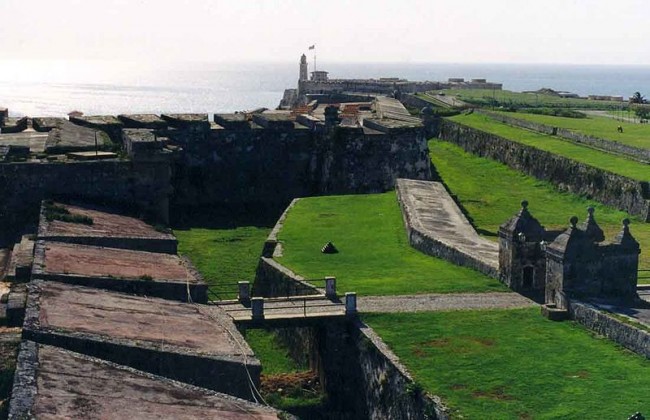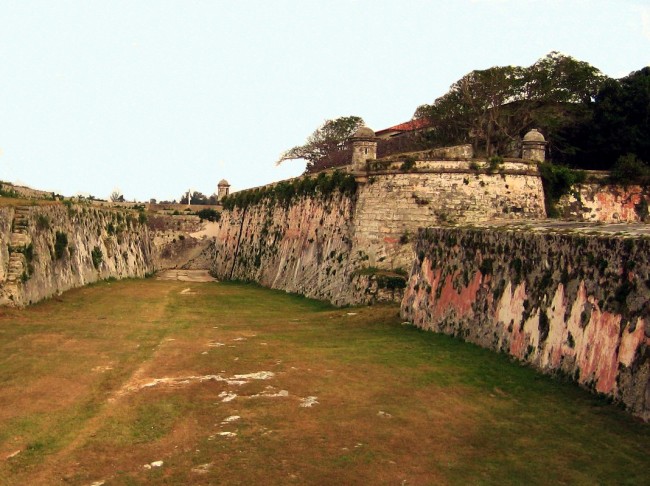
It’s a very personal feeling. Each time I visit the La Cabaña Fort of San Carlos during the International Book Fair (this event is annually held at that location) all the dead of that old military fort walk by my side like intangible ghosts.
Ever since that era when we were still a colony of Spain, that massive stone structure which, due to its privileged position, served as a protective shield for the villa of San Cristobal in Havana, has been the location of physical torture, pain, and deaths.
First, it was the black slaves. It is estimated that hundreds of them died during the 11 years of the fort’s construction (1763-1774). When Fidel Castro took power on January 1st, 1959, he appointed Che Guevara as head of La Cabaña.
During the first three months after the triumph of the Revolution, Guevara quickly pulled the trigger. The statistics of the number of executions vary. Some sources list around a thousand, while others have recorded more than ten thousand.
What is confirmed is that Guevara himself acknowledged it in a speech at the United Nations in New York on December 11th, 1964: “We have to say something here that is a known truth, and we have always expressed it to the world. Executions, yes, we have performed executions. We execute by firing squad and we will continue executing as long as it is necessary.”
Afterwards, the Fort was turned into a prison where over four thousand common and political prisoners were crammed into humid galleys. On its back lawns, right before the intense blue sea, dozens of “counter-revolutionaries” were slaughtered by gunfire, according to statistics gathered by survivors of Cuban political imprisonment.
Calling on their memories, ex-prisoners have said that each night, in unison with the 9 o’clock cannon-shot*, one could hear the execution fusillades and the terrifying screams of the victims.
With the passing of time, the excessive spilling of blood began to calm down. But La Cabaña, in addition to being a military base, continued to be a horrid jail, as witnessed by the prisoners themselves. And also an indisputable merit: Having the best view of the capital from the other side of the bay.
Then came the fall of the Berlin Wall, while the USSR was blown away by the winds of history. Castro, old and sick, handed over his power. And that was when La Cabaña joined the dollar dance.
They dressed her up and re-opened her as a historic military park. It was turned into a place where tourists — oblivious Canadians, Scandinavians and Italians — dine in seafood restaurants, watch the cannon-shot ceremony, and move their hips in a ridiculous way in clubs now set up in former galleys. And then, these tourists, among the reefs, a smell of saltpeter, and the dazzling night view of Havana, make love to prostitutes.
Ever since 1992, La Cabaña hosts the International Book Fair. Each year, the festival is dedicated to a specific country and a national personality. The twentieth annual festival, celebrated from February 10 to 20, is dedicated to the countries of ALBA — an alliance designed by Fidel Castro and Hugo Chavez, and made up of 9 nations of the continent. Also, the festival is paying homage to the Cuban intelectuals, Jaime Sarusky (Havana 1931), and Fernando Martinez (Yaguajay 1939).
The 2011 edition will also celebrate the Bicentenial of the first independence movement of Latin America. Just like previous years, millions of books will be sold and half a million visitors (most of them from Havana) will take part. More than 200 personalities from the areas of Culture and Literature, from over 40 countries, are expected to be present as well.
The distinguished guests are oblivious to the bloody past of La Cabaña Fort of San Carlos. Or, if they are aware of it, perhaps they are part of that odd leftist sector of the world, made up of people who are convinced that the deaths of their fellow travelers can always be justified.

*Translator’s note: 9 o’clock cannon-shot. In Cuba, it has always been a historic tradition to fire a cannon shot nightly at 9 o’clock.
Translated by Raul G.
February 10 2011
